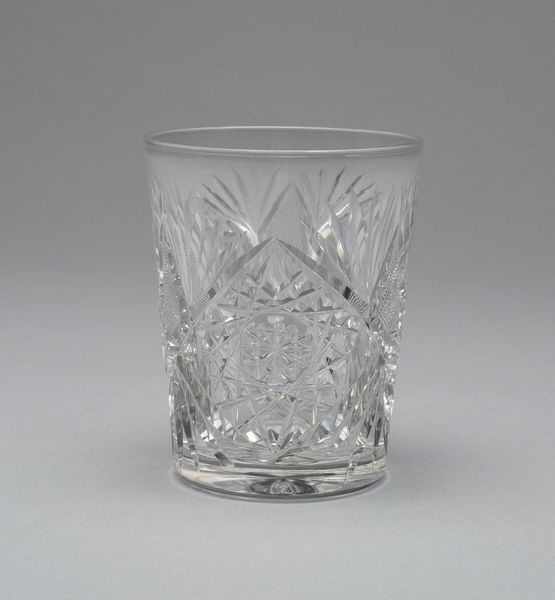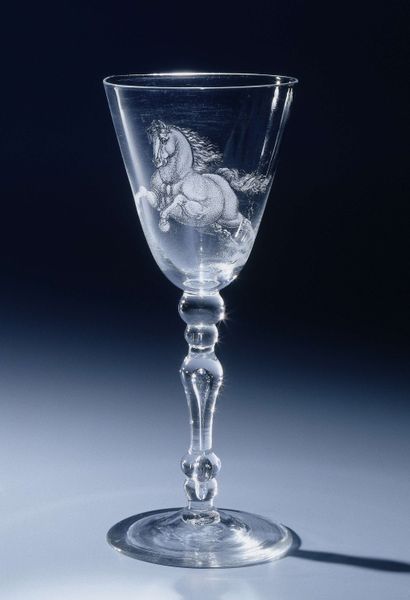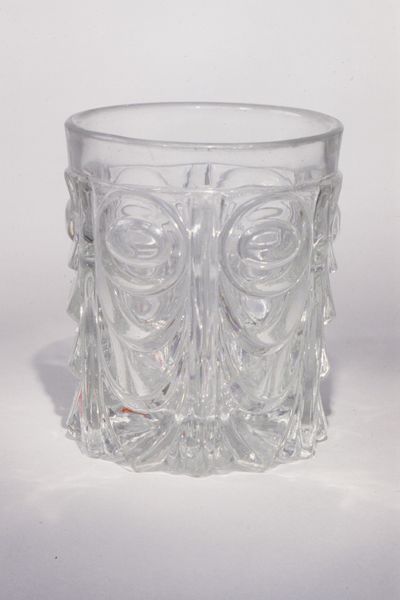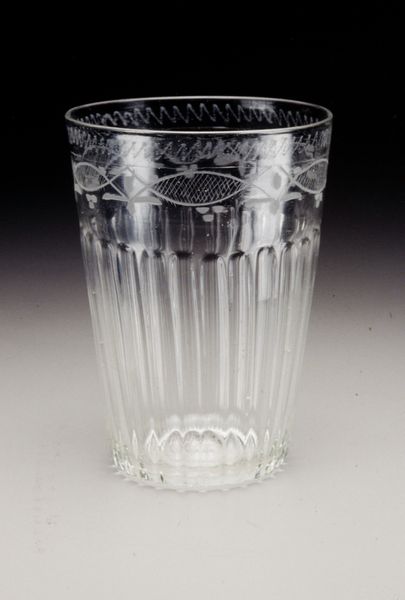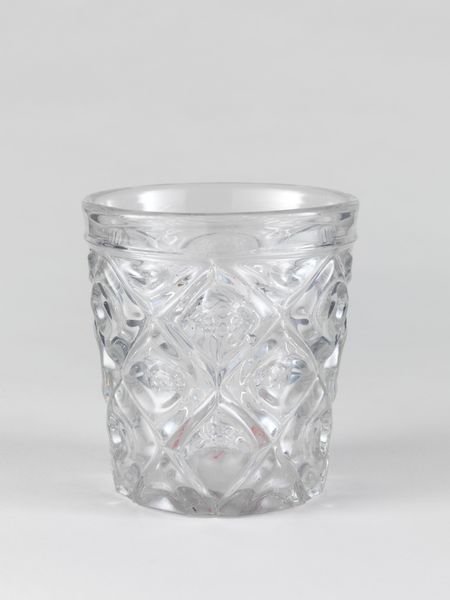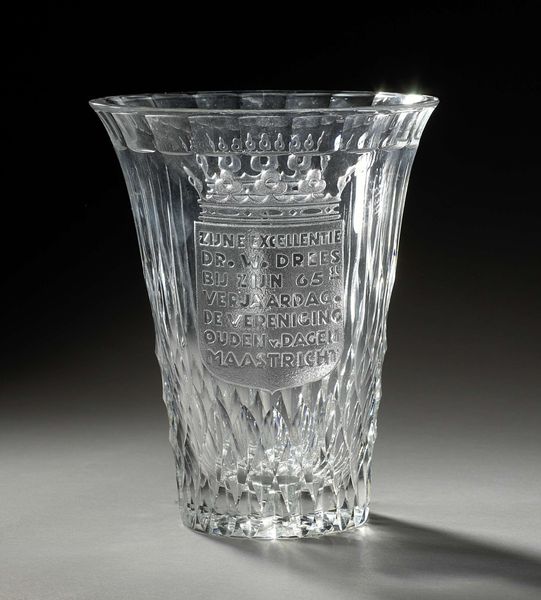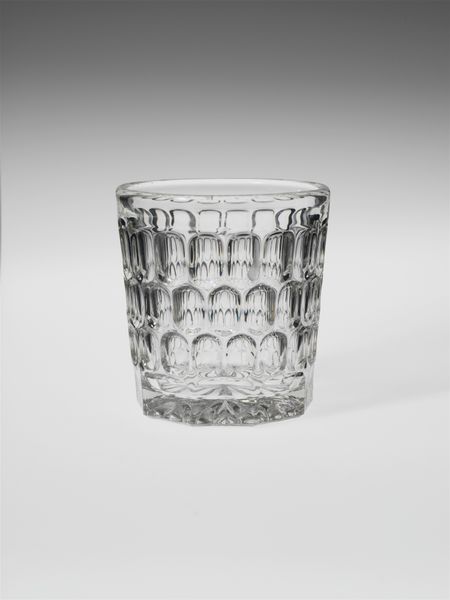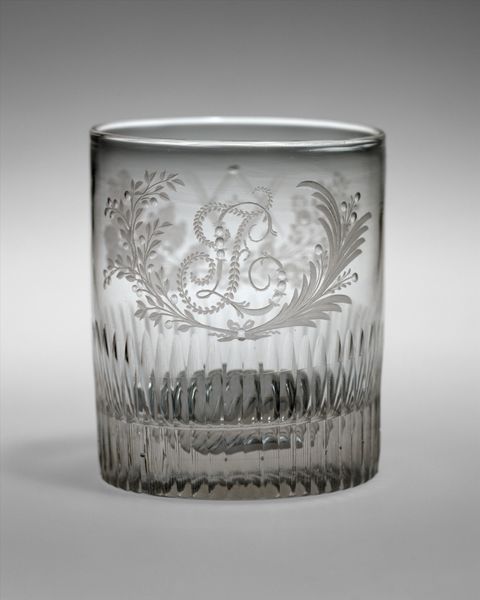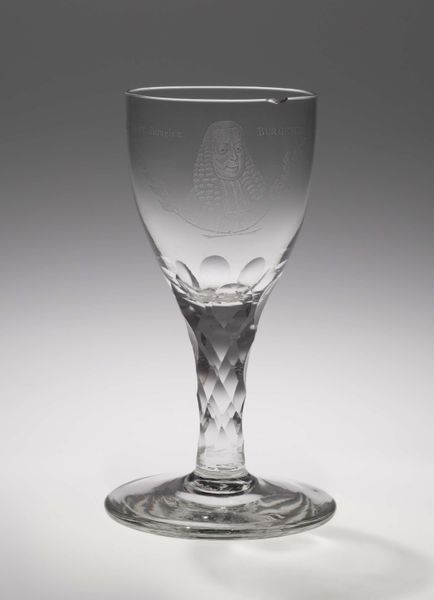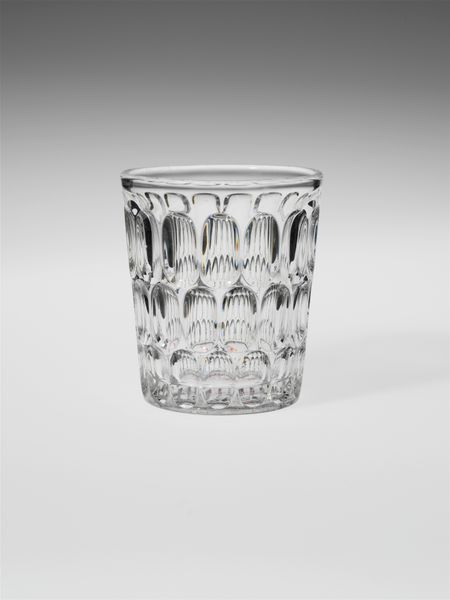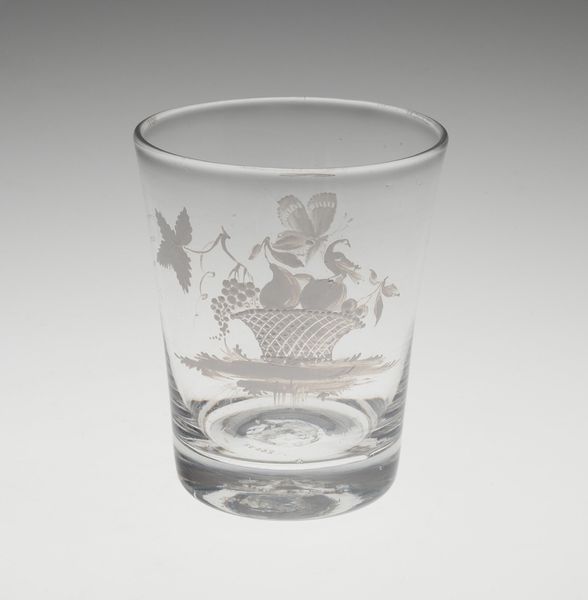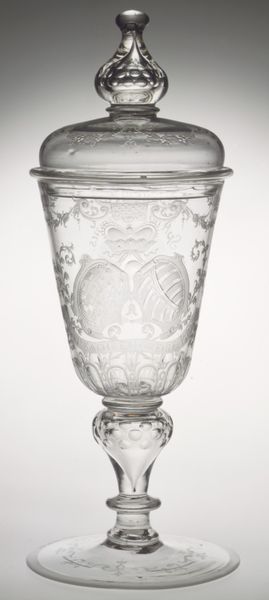
glass, sculpture
#
figuration
#
glass
#
sculpture
#
ceramic
Dimensions: H. 3 5/16 in. (8.4 cm); Diam. 3 1/16 in. (7.8 cm)
Copyright: Public Domain
Editor: So, here we have the 'Tumbler', made of glass sometime between 1830 and 1870 by the New England Glass Company. The details, and the play of light really strikes me! What can you tell me about the formal qualities of this glasswork? Curator: Let us consider the glass's intrinsic structure. Observe the interplay between the clear, undecorated spaces and the raised figural medallions. What is achieved in this deliberate contrast? Editor: It's interesting...the empty spaces seem to throw the figures into high relief, doesn't it? They give the impression of little cameos set into the glass itself. Curator: Precisely. Semiotically, the clear glass provides an implicit context. How does its emptiness affect your reading of the medallions themselves? Editor: Because it's glass, light goes straight through. Which highlights the ornate figures...it sort of feels classical, perhaps referencing ancient roman coins. Curator: I see. How does that association impact our understanding of the New England Glass Company's artistic choices here? Does it offer commentary on art? On value? Or is it purely aesthetic? Editor: I wonder if they are saying something about commodity as art. So... form speaking to function speaking to form. The continuous shapes create movement and reflection. Curator: A tumbler being both functional and aesthetic allows to create layers. These reflections almost deconstruct form, allowing to reassemble art for anyone to perceive. Thank you for your sharp thoughts. Editor: The way the formal analysis deepens the cultural aspects, I understand the 'Tumbler' so much better!
Comments
No comments
Be the first to comment and join the conversation on the ultimate creative platform.
